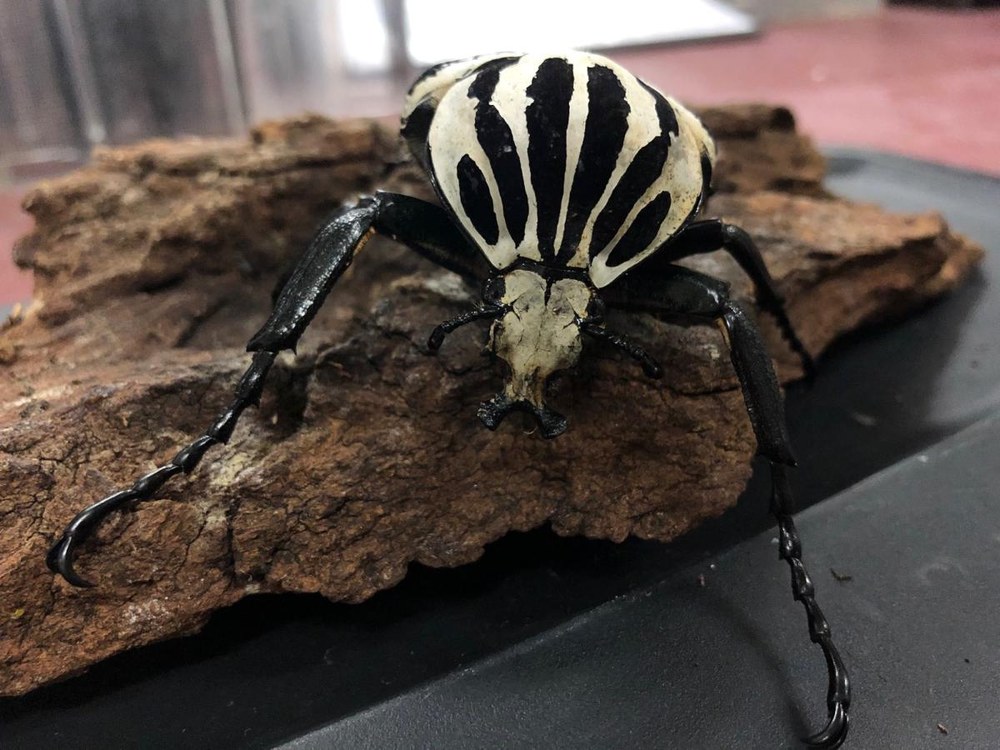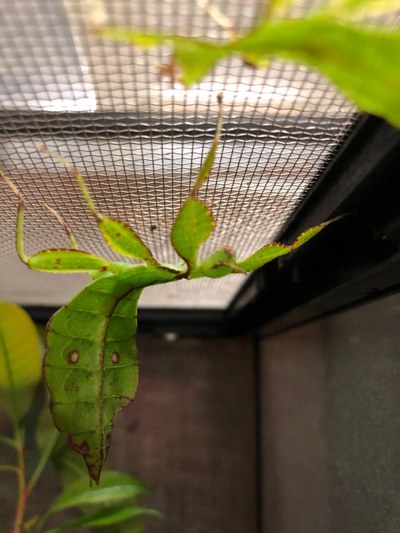Bugs
Learn about the world of bugs and how to classify them at home.
Learning Goal
Learn about the vital role “bugs” play in an ecosystem. Examine the ways in which scientists classify many different species into categories. Gather data and conduct your own native species classification experiment!
Introduction to Bugs

Whether they are crawling, buzzing, flying, burrowing, hopping or scurrying, bugs are everywhere. There is a vast diversity of bugs. If they have a hard outer shell (exoskeleton) and segmented legs, then the scientific name for them is arthropods. Insects are a category of arthropods and have three segmented body parts with six legs. In addition, many other creatures like spiders, millipedes and crabs are arthropods but not insects. Worms and snails are not considered arthropods at all because they lack an exoskeleton.
All animals, including bugs, are divided into categories based on their physical characteristics: how many legs they have, what is covering their body, etc. This helps us communicate and learn about them. However, it is important to remember that no species is fully defined by their category and that there will always be some “exceptions to the rule” no matter how humans decide to name and categorize them. For instance, we generally think that all mammals have live births, but both the echidna and platypus are considered mammals and they lay eggs instead.
At this point in time, humans have documented about one million different species of insects, making them the most diverse group of organisms on earth. However, most humans are only familiar with a small handful of species like beetles, praying mantises, ants, cockroaches, butterflies, bees and flies.
In addition to those million “known” species, it is estimated that there are at least one million more insects and other species of arthropod waiting to be discovered. Scientists document another new species every few days. While scientists are discovering so many new species all the time, there are numerous arthropods that are still undiscovered and going extinct. Scientists are coming up with new ways to study and count insect populations all the time in hopes that their work can help to preserve different insect species.
Bug Conservation
Insects make up about 80 percent of all life on Earth and we rely on them for a lot of important services they provide such as pollination, decomposition, waste consumption, and being a food resource for hundreds of other animals. Without the important roles performed by insects, entire ecosystems would collapse.
Currently, insect populations everywhere are declining due to habitat loss, the use of pesticides and climate change. The good news is that there are things that you can do to help. You can get involved with citizen science projects like Lost Ladybug Citizen Science Project, which monitors insect populations. There are lots of other local and nation-wide citizen science projects for a variety of species. Research and find one that you are passionate about. Citizen science projects involve scientists of any age to collect data. Most citizen science projects ask you to submit photos or other documentation for a cumulative database of information. This data can be useful in making laws, funding research and spurring other community projects along with being an educational tool and resource.
By protecting natural areas like state parks and open spaces, you can be an advocate for insect habitat. You can also volunteer to plant trees, grow your own garden/plants, or work to keep places like your local parks and trails clean. If you have space in your yard you can make a home for native plant species, which provide excellent insect habitat. Using natural herbicides or pesticides in your garden or yard can help insects as well. Many insecticides hurt more than the intended species and can sometimes be replaced by something much milder like essential oils or other forms of deterrent.
By making a stand for wildlife, however big or small, and educating others to do the same, you can make a difference. Arthropods and insects are vital in keeping our planet and us healthy.
Bugs at the ABQ BioPark

One of the ABQ BioPark's goals is to expose people to the amazing world of arthropods through education. Arthropods are often misunderstood or thought to be scary or pests. The ABQ BioPark works to correct these misconceptions people may have about them. While visiting the ABQ BioPark, you can encounter bugs, arthropods, insects, arachnids, crustaceans, and lots more whether you're outside at the Botanic Garden or Zoo, inside the Bugarium or Bee and Butterfly Pavilion, at Tingley Beach on trails or in ponds, or with educators from the Discover the BioPark programs.
At the BUGarium we have a variety of different habitats for both local and exotic arthropod species. Even though arthropods have much smaller habitats than other animals, it is still important for them to receive enrichment. One of the places to observe this is in the leaf-cutter ant habitat. This species has a unique set up: the ants travel overhead from where they collect leaves and then back to their colony. This mimics their natural environment and behavior, as leaf-cutter ants in the wild travel long distances up trees to transport their food. At the BioPark, we always create habitats that allow all animal residents big or small to function in a way that is natural for them.
Inside the BUGarium's bathrooms you might even get a sneak-peek at what can live inside our walls! Cockroaches have the ability to live in small, dark spaces, as they usually prefer to hide during the day and come out at night searching for food. In this way, their exhibit is best-suited for them while being equally fun and surprising for guests that come to visit!
In addition to those creatures, naked mole rats, scorpions, tarantulas and more exotic species reside in the BUGarium. Behind the scenes, we also have a huge arthropod “rearing” center where we can assist in conservation of many species by breeding and raising them. Specifically, the BUGarium's goliath beetle rearing is especially successful.
Outside, the Butterfly and Bee Pavilion focuses solely on local pollinators and plants that you can grow yourself in order to attract them. Read more about Native Pollinators at the BioPark here.
Activity: Classify Your Bugs
Life is everywhere. You won’t need to go very far outside before encountering an insect of some sort to study for our experiment below. After completing the experiment at home or in a nearby park, save your results so you can do it again at the BioPark or somewhere else and compare the species you find.
Set the scene
You are an entomologist exploring an unknown land (entomologists are scientists or zoologists who specialize in studying insects). Because this land has never been discovered before, every single arthropod you find is new and must be cataloged or described! As a scientist, it is your choice to catalog the species you find in whatever way makes the most sense to you.
The first step to learning about any species is to document how they look and what makes them different. It is also important to collect data about where they live, what they eat, interesting behaviors and where/when you are seeing the species.
Being a scientist means we must conduct an experiment and today we will explore our own backyard or outdoor space, wherever that might be. Spend some time (15-30 minutes) outside monitoring and observing wildlife you see, specifically looking for bugs. Then you will count the number of species you saw, name them as though they were newly discovered, and sort them into categories organizing the species in a way that makes sense to you.
Depending on where you are, and the species you are finding, you may not be able to count every single species and can tally or estimate the number you see. Adjust your experiment as you see necessary for the conditions of your environment.
Activity Materials
- Paper
- Writing/drawing utensils
- Outdoor space
- Ruler or tape measure (optional)
- If you want to get creative with your documentation, you can choose to use a camera or video/audio recorder, paint or other craft supplies, or even something small like pebbles or beans to count with.
Directions
- After collecting your materials, choose what information you would like to gather from the list below or come up with your own list of criteria. If there is something you are particularly interested in, you can relate the data you collect to that interest. You can choose to keep it simple and just catalog the looks of each arthropod or you can get more detailed with the information you gather and include things like location or behavior.
- How the species looks:
- Color
- Shape
- Number of legs
- Number of body segments
- Size
- Wings or no wings
- Where the species is:
- City/Town
- Location (on-ground, in-air, on wall, etc.)
- Plant life or water nearby
- Type of substrate; soil, sand, rocks, etc.
- Time of day
- Weather conditions
- What the species is doing:
- Flying/crawling/hiding
- With other species/alone
- Eating
- Traveling/moving
- How the species looks:
- Sit or explore somewhere outside for 15-30 minutes and see what arthropods, insects or other small creatures you find. Each new animal can be drawn or described, or cataloged however you like. However, you must do things as systematically as possible for each new species.
- For example, if you were most interested in arthropod habitat, you could set your criteria to document the location and plant life nearby for each new species. As a scientist, it is important to keep your data consistent, as this will allow you to make comparisons with it later.
- Remember to pretend that every arthropod you see is new to you and to the scientific community. Collect detailed data as if you are the first person ever to have discovered that species: nobody else knows anything about it!
- At the end of your set timeframe for collecting data, examine your results.
- How many species were you able to catalog?
- What do you think is the best way to organize them into categories? By size? Color?
- Behavior? Number of body segments?
- Divide your specimens into groups and name each group.
- What characteristics define your groupings?
- How many groups did you end up with?
- Are there any groups that all of your specimens belong to? That none of them belong to?
- What patterns or lack of patterns do you notice?
- If you want to divide your specimens into groups a different way a second or third time, go for it! There are many ways that might make sense.
- After your categorization is over, ask yourself the following questions:
- Why do you think it is important to divide/categorize animals into groups? Did it help you make any new connections?
- How could grouping animals help us understand them better? How could it make it more difficult to understand each species uniquely?
- Do not forget to save your data, as you can share it with others who want to learn more, and build onto your data with future observation.
Additional Resources
- Build Your Own Dung Beetle: Print out this PDF to build your own dung beetle.
- Jumping Spider Online Puzzle: Students of all ages can do a variety of online puzzles here.
